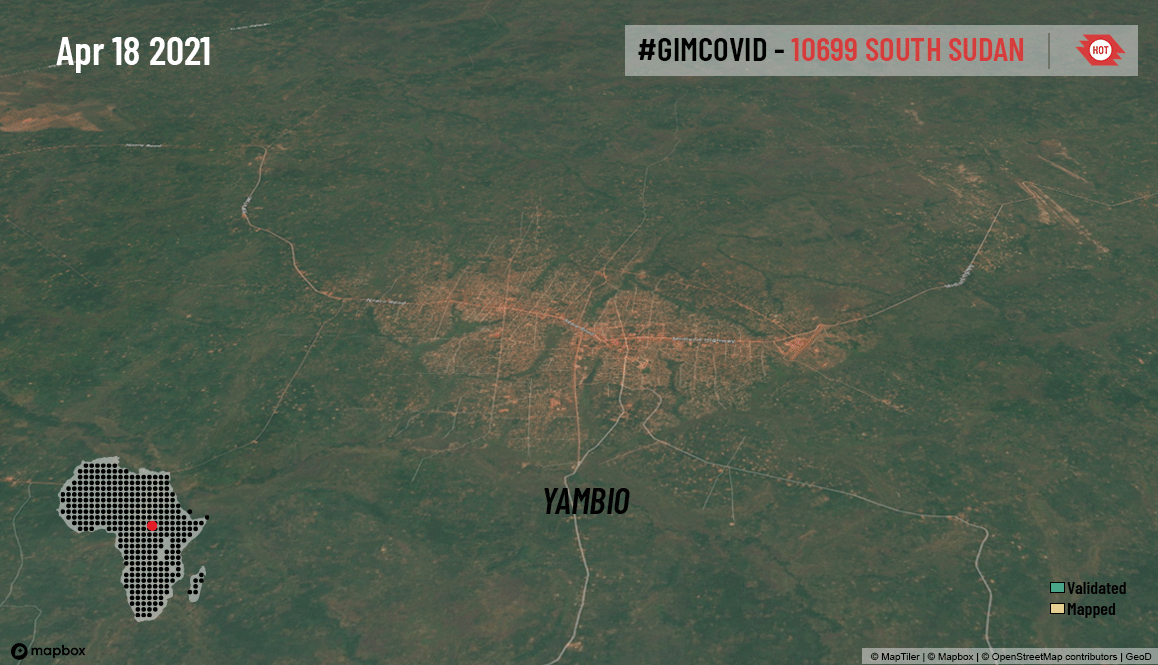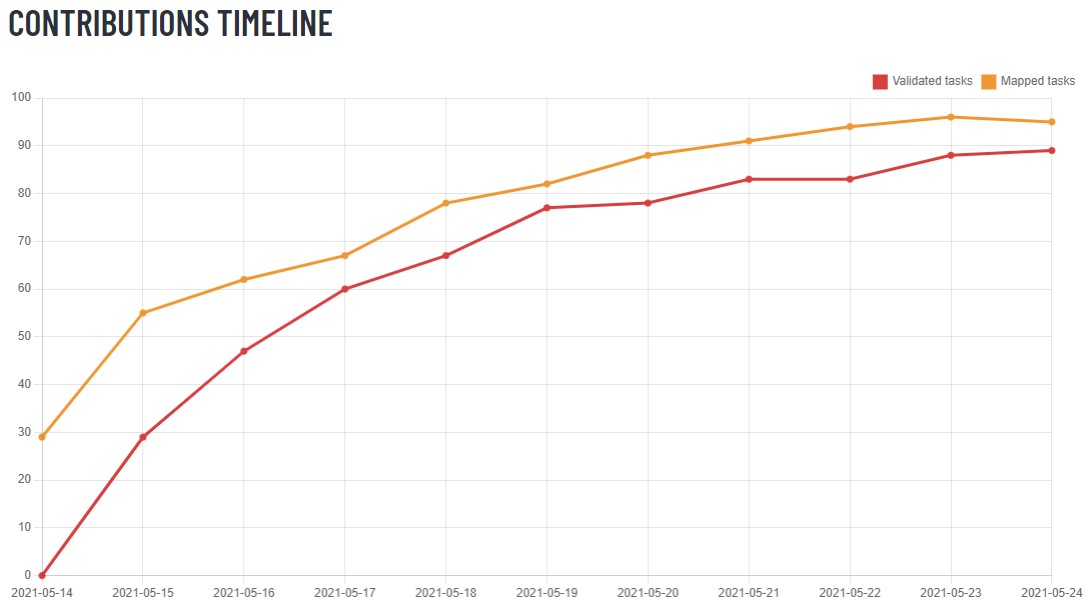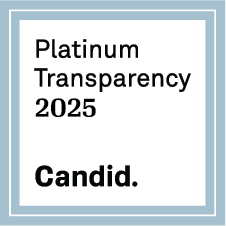Validators: Experienced Mappers Making an Outsized Contribution
Posted by Ralph (Ralph) Aytoun, Rebecca Chandiru, Sam Colchester, Russell Deffner, Geoffrey Kateregga • May 24, 2021

Validators serve an essential role in ensuring data quality and providing feedback to new mappers. Learn how validation works and how you can become a validator.
Data quality is essential in humanitarian mapping. The data is used by humanitarian organizations like the Red Cross, MSF and others to reach people in need. An example is Crowd2Map and Hope for Women and Girls in Tanzania, who use maps to rescue girls under threat of female genital mutilation. Having a detailed and accurate map can prove crucial for teams trying to reach and protect girls.
“Validation is crucial to ensure that the data is fit for purpose,” says Janet Chapman, founder of Crowd2Map.
OpenStreetMap (OSM) is often called the Wikipedia of maps, a collaborative project that anyone can contribute to and communities can freely use for navigation, research, advocacy and planning. A new user can create an account and make their first edit within minutes. Because anyone can edit this map, monitoring data quality is an ongoing priority.
But that doesn’t mean that OSM data is of poor quality. While anyone can make edits, these edits can also be reviewed by anyone else using OpenStreetMap. Open source projects like Wikipedia and OpenStreetMap work because most edits are made by conscientious, knowledgeable users, and there are communities of users who actively verify the work of others.
Contributors who consider themselves to be part of the humanitarian OpenStreetMap community, which mostly maps through the Tasking Manager using satellite imagery, have developed a workflow for this: validation. A volunteer maps within a specific map square, and then a more experienced mapper, a validator, checks their work and either makes corrections or reopens the map square for more mapping.
Validators also advise beginner mappers on how to improve their mapping. “Validators not only accept or reject mappers work, but also provide feedback on work completed, steer mappers towards more productive practices for the future, and encourage them to expand their experience and hopefully one day also become validators,” explains Chapman.

What Happens When Mapping Goes Wrong, and How to Avoid It
To understand the importance of data quality, it can help to think about what can happen if that quality isn’t there.
One common mistake is to overlap roads and buildings. If a satellite navigation system sees a road entering a building, it will think there is a dead-end, not a route, and that can potentially add hours to a journey.
Trees, rocks, cars, (and even elephants!) are sometimes accidentally marked as buildings, particularly when the available satellite imagery is grainy and there are not many features visible for scale. In this case, local mappers or aid workers responding to a crisis or serving as part of a public health campaign could waste a lot of precious time traveling to a place with no buildings.
Even just the size of building footprints is important to quality data. In areas without up-to-date or accurate census data, the total area of building footprints is often used to estimate the area’s population. These estimates are only as accurate as the footprints that have been traced, so this data must be as precise as possible to correctly inform the allocation of resources in a crisis.
The most important part of data quality is simply careful mapping: taking one’s time and checking one’s work. Beyond this, there are a number of simple steps that can be taken to avoid many of these common errors. When the imagery is grainy, it can help to zoom in and out to recognize buildings. Squinting can even help by making the image less grainy. Trying different imagery sources can also make it easier to recognize features by seeing them in different seasons and lighting. When mapping new areas or features where you haven’t mapped before, you should also see the OpenStreetMap wiki’s guidelines for tagging that area and features.
Becoming a Validator
The biggest challenge we have in ensuring data quality is that there are far more mappers than validators, with literally hundreds of thousands of mappers to only hundreds of validators. HOT has less than a thousand global validators and validators in training on the Tasking Manager, with additional validators from organizations including YouthMappers and Médecins Sans Frontières. Active validators have an outsized impact: the top 10 validators on a project often account for more than 70 percent of the validation on it. Losing even just a few active validators can leave its mark on project completion rates.
While we welcome more validators, the demanding skill set the role requires means becoming a validator is not as simple as just signing up. To date, only one in five applicants who’ve applied have been invited to the validation training team. Mappers wishing to become validators should take time to become experienced at mapping and learn what validation entails before submitting an application.
If you think this path is right for you, the most important thing to do is to practice mapping. Be sure to map many different kinds of features and in many different locations, and actively use the OSM wiki’s tagging guide to make sure you are identifying and tagging features correctly. Using JOSM is also a plus, but it is not essential as there are increasing validation opportunities using the iD Editor.

There are online trainings you can use as well, both in text and in videos. Two of the most popular are:
The important thing to remember is that nothing can replace experience, and it is important to listen to the feedback you get from more experienced mappers as you map.
When you reach the point that you feel confident mapping a wide variety of features in different places, then it is time to apply to become a validator. When your application is received, a member of the validator cohort will look over your mapping history. If you have only been mapping for a few months, you may be asked to continue practicing, and if you are already an advanced mapper, you will likely be invited to join the validation trainee team. This will give you the opportunity to validate with oversight and feedback from more experienced validators. You will be offering valuable feedback to mappers, helping to complete projects, and ensuring end-users receive high-quality data that support their humanitarian efforts.







